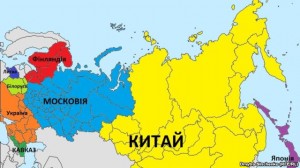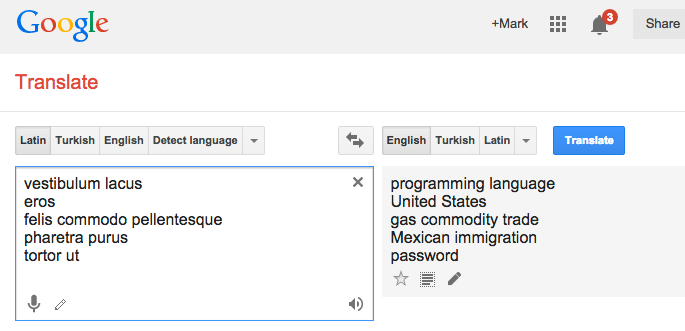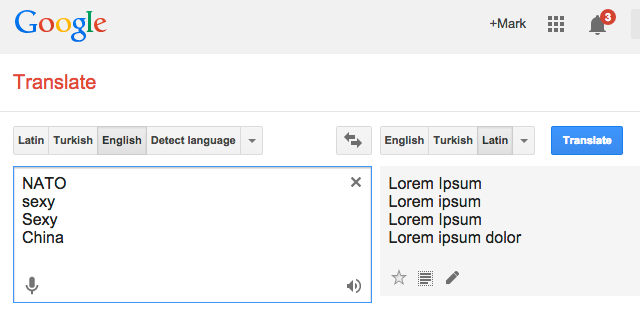Global Research:
The end goal of the US and NATO is to divide (balkanize) and pacify (finlandize) the world’s biggest country, the Russian Federation, and to even establish a blanket of perpetual disorder (somalization) over its vast territory or, at a minimum, over a portion of Russia and the post-Soviet space, similarly to what is being done to the Middle East and North Africa.
The future Russia or the many future Russias, a plurality of weakened and divided states, that Washington and its NATO allies see is/are demographically in decline, de-industrialized, poor, without any defensive capabilities, and hinterlands that will exploited for their resources.
The Plans of the Empire of Chaos for Russia
Breaking the Soviet Union has not been enough for Washington and NATO. The ultimate goal of the US is to prevent any alternatives from emerging in Europe and Eurasia to Euro-Atlantic integration. This is why the destruction of Russia is one of its strategic objectives.
Washington’s goals were alive and at work during the fighting in Chechnya. They were also seen in the crisis that erupted with EuroMaidan in Ukraine. In fact, the first step of the divorce between Ukraine and Russia was a catalyst for the dissolution of the entire Soviet Union and any attempts at reorganizing it.
The Polish-American intellectual Zbigniew Brzezinski, who was US President Jimmy Carter’s national security advisor and an architect behind the Soviet invasion of Afghanistan, has actually advocated for the destruction of Russia through gradual disintegration and devolution. He has stipulated that «a more decentralized Russia would be less susceptible to imperial mobilization». [1] In other words, if the US divides Russia up, Moscow would not be able to challenge Washington. In this context, he states the following: «A loosely confederated Russia—composed of a European Russia, a Siberian Republic, and a Far Eastern Republic—would find it easier to cultivate closer economic regulations with Europe, with the new states of Central Asia, and with [East Asia], which would thereby accelerate Russia’s own development». [2]
These views are not merely constrained to some academic’s ivory tower or to detached think-tanks. They have the backing of governments and have even cultivated adherents. One reflection of them is below.
US State-Owned Media Forecasts the Balkanization of Russia
Dmytro Sinchenko published an article on September 8, 2014 about dividing Russia. His article is titled «Waiting for World War III: How the World Will Change». [3] Sinchenko was involved in EuroMaidan and his organization, the Ukrainian Initiative «Statesmen Movement» (Всеукраїнської ініціативи «Рух державотворців»), advocates for an ethnic nationalism, the territorial expansion of Ukraine at the expense of most the bordering countries, reinvigorating the pro-US Georgia-Ukraine-Azerbaijan-Moldova (GUAM) Organization for Democracy and Economic Development, joining NATO, and launching an offensive to defeat Russia as part of its foreign policy goals. [4] As a note, the inclusion of the word democracy in GUAM should not fool anyone; GUAM, as the inclusion of the Republic of Azerbaijan proves, has nothing to do with democracy, but with counter-balancing Russia in the Commonwealth of Independent States (CIS).
Sinchenko’s article starts by talking about the history of the «Axis of Evil» phrase that the US has used to vilify its enemies. It talks about how George W. Bush Jr. coined the phrase in 2002 by grouping Iraq, Iran, and North Korea together, how John Bolton expanded the Axis of Evil to include Cuba, Libya, and Syria, how Condoleezza Rice included Belarus, Zimbabwe, and Myanmar (Burma), and then finally he proposes that Russia be added to the list as the world’s main pariah state. He even argues that the Kremlin is involved in all the conflicts in the Balkans, Caucasus, Middle East, North Africa, Ukraine, and Southeast Asia. He goes on to accuse Russia of planning to invade the Baltic States, the Caucasus, Moldova, Finland, Poland, and, even more ridiculously, two of its own close military and political allies, Belarus and Kazakhstan. As the article’s title implies, he even claims that Moscow is intentionally pushing for a third world war.
This fiction is not something that has been reported in the US-aligned corporate networks, but is something that has been published directly by US government-owned media. The forecast was published by the Ukrainian service of Radio Free Europe/Radio Liberty, which has been a US propaganda tool in Europe and the Middle East that has helped topple governments.
Chillingly, the article tries to sanitize the possibilities of a new world war. Disgustingly ignoring the use of nuclear weapons and the massive destruction that would erupt for Ukraine and the world, the article misleadingly paints a cozy image of a world that will be corrected by a major global war. Radio Free Europe/Radio Liberty and the author are essentially saying that «war is good for you» to the Ukrainian people and that some type of utopian paradise will emerge after a war with Russia.
The article also fits very nicely into the contours of Brzezinski’s forecast for Russia, Ukraine, and the Eurasian landmass. It forecasts the division of Russia whereas Ukraine is a part of an expanded European Union, which includes Georgia, Armenia, the Republic of Azerbaijan, Belarus, Israel, Lebanon, and Denmark’s North American dependency of Greenland, and also controls a confederation of states in the Caucasus and the Mediterranean Sea—the latter could be the Union for the Mediterranean, which would encompass Turkey, Syria, Egypt, Libya, Tunisia, Algeria, Morocco, and the Moroccan-occupied Sahrawi Arab Democratic Republic or Western Sahara. Ukraine is presented as an integral component of the European Union. In this regard, Ukraine appears to be situated in a US-aligned Franco-German-Polish-Ukrainian corridor and Paris-Berlin-Warsaw-Kiev axis that Brzezinski advocated for creating in 1997, which Washington would use to challenge the Russian Federation and its allies in the CIS. [5]
Redrawing Eurasia: Washington’s Maps of a Divided Russia
With the division of the Russian Federation, Radio Free Europe’s/Radio Liberty’s article claims that any bipolar rivalry between Moscow and Washington would end after World War III. In a stark contradiction, it claims that only when Russia is destroyed will there be a genuine multipolar world, but also implies that the US will be the most dominant global power even though Washington and the European Union will be weakened from the anticipated major war with the Russians.

Accompanying the article are also two maps that outline the redrawn Eurasian space and the shape of the world after the destruction of Russia. Moreover, neither the author nor his two maps recognize the boundary change in the Crimean Peninsula and depict it as a part of Ukraine and not the Russian Federation. From west to east, the following changes are made to Russia’s geography:
• The Russian oblast of Kaliningrad will be annexed by Lithuania, Poland, or Germany. One way or another it will become a part of an enlarged European Union.
• East Karelia (Russian Karelia) and what is currently the federal subject of the Republic of Karelia inside Russia’s Northwestern Federal District, along with the Federal City of St. Petersburg, Leningrad Oblast, Novgorod Oblast, the northern two-thirds of Pskov Oblast, and Murmansk Oblast are split from Russia to form a Finnish-aligned country. This area could even be absorbed by Finland to create a Greater Finland. Although the oblast of Archangel (Arkhangelsk) is listed as a part of this partitioned area in the article, it is not included in the map (probably due to a mistake in the map).
• The southern administrative districts of Sebezhsky, Pustoshkinsky, Nevelsky, and Usvyatsky in Pskov Oblast from the Northwestern Federal District and the westernmost administrative districts of Demidovsky, Desnogorsk, Dukhovshchinsky, Kardymovsky, Khislavichsky, Krasninsky, Monastyrshchinsky, Pochinkovsky, Roslavlsky, Rudnyansky, Shumyachsky, Smolensky, Velizhsky, Yartsevsky, and Yershichsky, as well as the cities of Smolensk and Roslavl, in Smolensk Oblast from the Central Federal District are joined to Belarus. The Smolensk Oblast’s Dorogobuzhsky, Kholm-Zhirkovsky, Safonovsky, Ugransky, and Yelninsky districts appear to be portioned further in the map as the new border between Belarus and the proposed amputated Russia.
• The North Caucasian Federal District of Russia, which is comprised of the Republic of Dagestan, the Republic of Ingushetia, the Kabardino-Balkar Republic, the Karachay-Cherkess Republic, the Republic of North Ossetia–Alania, Stavropol Krai, and Chechnya, is separated from Russia as a European Union-influenced Caucasian confederation
• The South Federal District of Russia, which is constituted by the Republic of Adygea, Astrakhan Oblast, Volgograd Oblast, Republic of Kalmykia, Krasnodar Krai, and Rostov Oblast, is completely annexed by Ukraine; this leads to a shared border between Ukraine and Kazakhstan and cuts Russia off from the energy-rich Caspian Sea and a direct southern frontier with Iran.
• Ukraine also annexes the oblasts of Belgorod, Bryansk, Kursk, and Voronezh from Russia’s most heavily populated federal district and area, the Central Federal District.
• Siberia and the Russian Far East, specifically the Siberian Federal District and the Far Eastern Federal District, are torn off from Russia.
• The text states that all of the territory in Siberia and most of the territory in the Russian Far East, which are comprised of the Altai Republic, Altai Krai, Amur Oblast, the Republic of Buryatia, Chukotka, the Jewish Autonomous Oblast, Irkutsk Oblast, Kamchatka Krai, Kemerovo Oblast, Khabarovsk Krai, the Republic of Khakassia, Krasnoyarsk Krai, Magadan Oblast, Novosibirsk Oblast, Omsk Oblast, Primorsky Krai, Sakha Republic, Tomsk Oblast, the Tuva Republic, and Zabaykalsky Krai either turn into several Chinese-dominated independent states or, alongside Mongolia, become new territories of the People’s Republic of China. The map categorically draws Siberia, most the Russian Far East, and Mongolia as Chinese territory. The exception to this is Sakhalin Oblast.
• Russia loses Sakhalin Island (called Saharin and Karafuto in Japanese) and the Kurile Islands, which constitute Sakhalin Oblast. These islands are annexed by Japan.
On his own webpage, Sinchenko posted his Radio Free Europe/Radio Liberty article days earlier, on September 2, 2014. The same maps, which are accredited to Radio Free Europe/Radio Liberty, are also present. [6] There, however, is an additional picture on Sinchenko’s personal webpage that is worth noting; this is a picture of Russia being cheerfully carved out for consumption as a large meal by all the bordering countries. [7]
Mapping a New World Order: The World After World War III?
The second map is of a post-World War III globe that is divided into several supranational states. Japan is the only exception. The second map and its supranational states can be described as follows:
• As mentioned earlier, the European Union is expanded and has control over its peripheries in the Caucasus, Southwest Asia, and North Africa. This is the realization of NATO’s Mediterranean Dialogue and Partnership for Peace at the political and military levels and the European Union’s Eastern Partnership and Euro-Mediterranean Partnership (the Union for the Mediterranean) at the political and economic levels.
• The United States forms a North American-based supranational entity that includes Canada, Mexico, Guatemala, Belize, El Salvador, Honduras, Nicaragua, Costa Rica, Panama, Colombia, Venezuela, Ecuador, the Guianas (Guyana, Suriname, and French Guiana), and the entire Caribbean.
• All the countries that are not swallowed by the US in South America will form their own supranational entity in a lesser South America, which will be dominated by Brazil.
• Some type of Southwest Asian bloc or supranational entity will be formed out of Afghanistan, Pakistan, Iran, Iraq, Jordan, Saudi Arabia, Kuwait, Bahrain, Qatar, the United Arab Emirates, Oman, and Yemen.
• Some type of a supranational entity will be formed in the Indian sub-continent or South Asia out of India, Sri Lanka (Ceylon), Nepal, Bhutan, Bangladesh, Myanmar (Burma), and Thailand.
• There will be a supranational entity in Australasia and Oceania that will include the Philippines, Malaysia, Singapore, Brunei, Indonesia, East Timor, Papa New Guinea, New Zealand, and the islands of the Pacific. This entity will include Australia and be dominated by Canberra.
• Aside from North Africa, which will be controlled by the European Union, the rest of Africa will unify under the leadership of South Africa.
• An East Asian supranational entity will include most of the Russian Federation, Indo-China, China, the Korean Peninsula, Mongolia, and post-Soviet Central Asia. This entity will be dominated by the Chinese and dominated from Beijing.
Although Radio Free Europe’s article and two post-World War III maps can be dismissed as fanciful notions, some important questions have to be asked. Firstly, where did the author pick up these ideas? Were they transmitted through any workshops supported by the US and the European Union indirectly? Secondly, what informs the author’s visions of a post-World War III political landscape?
The author has essentially catered to Brzezinski’s outline of a divided Russia. The text and the maps have even included the areas of North Africa, the Middle East, and the Caucasus that the European Union views as a secondary periphery or layer to itself. These areas are even shaded with a lighter blue than the darker blue used to identify the European Union.
Even if Radio Free Europe is dismissed; no one should lose sight of the fact that Japan still lays claim to Sakhalin Oblast and the US, European Union, Turkey, and Saudi Arabia have been supporting separatist movements in both the Federal Southern District and the North Caucasian District of the Russian Federation.
Ukrainianism
The Radio Free Europe / Radio Liberty article radiates with traces of Ukrainianism, which is worth briefly mentioning.
Nations are constructed, because they are all dynamic communities that, in one way or another, are constructed and kept together by the collective of individuals that make societies. In this regard they can be called imagined communities.
There are machinations at play to deconstruct and reconstruct nations and groups in the post-Soviet space and Middle East. This can be called the manipulation of tribalism in sociological and anthropological jargon or, in political jargon, the playing out of the Great Game. In this context, Ukrainianism has particularly been supportive of anti-government elements and anti-Russian nationalist feelings in Ukraine for more than one hundred years, firstly under the Austrians and Germans, later through the Poles and British, and now under the US and NATO .
Ukrainianism is an ideology that seeks to reify and enforce a new collective imagining or false historic memory among the Ukrainian people about them always being a separate nation and people, in both ethnic and civic terms, from the Russian people. Ukrainianism is a political projection that seeks to deny the historic unity of the Eastern Slavs and the geographic roots and historic context behind the distinction between Ukrainians and Russians. In other words, Ukrainianism seeks to de-contextual and to forget the process that has led to the distinction of Ukrainians from Russians.
***
Russia has always arisen from the ashes. History can testify to this. Come what may, Russia will be standing. Whenever all the diverse people of Russia are united under one banner for their homeland, they have shattered empires. They have survived catastrophic wars and invasions and have outlived their enemies. Maps and borders may change, but Russia will remain.
NOTES
[1] Zbigniew Brzezinski, The Grand Chessboard: American Primacy and Its Geostrategic Imperatives (NYC: Basic Books, 1997), p.202.
[2] Ibid.
[3] Дмитро Сінченко [Dmytro Sinchenko], «В очікуванні Третьої світової війни. Як зміниться світ,» [«Waiting for World War III: How the World Will Change»], Радіо Вільна Європа/Радіо Свобода [Radio Free Europe/Radio Liberty], September 8, 2014.
[4] Всеукраїнської ініціативи «Рух державотворців,» [Ukrainian Initiative «Statesmen Movement»] «Стратегія зовнішньої політики,» [Foreign Policy Strategy] Рух Державотворців: втілимо мрії в життя [Statesman Movement: Chasing Dreams/Visions]. Accessed September 9, 2014.
[5] Brzezinski, The Grand Chessboard, op. cit., pp.85-86
[6] Дмитро Сінченко [Dmytro Sinchenko], «В очікуванні Третьої світової війни. Як зміниться світ,» [«Waiting for World War III: How the World Will Change»], Дмитро Сінченко (Блоґ) [Dmytro Sinchenko {blog}], September 2, 2014.
[7] Ibid.





